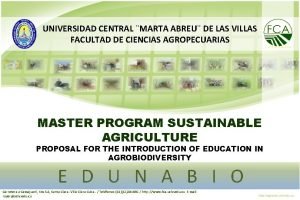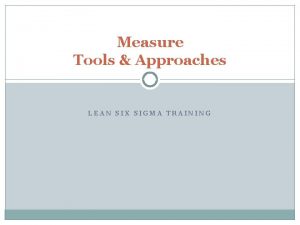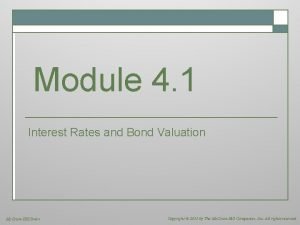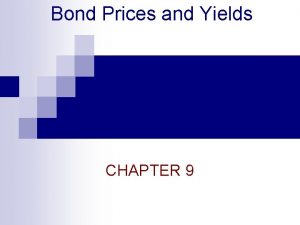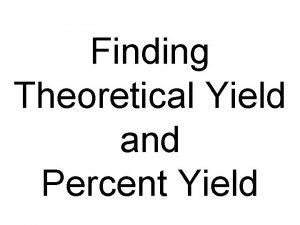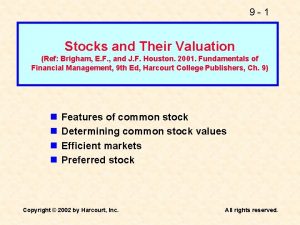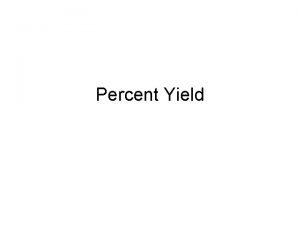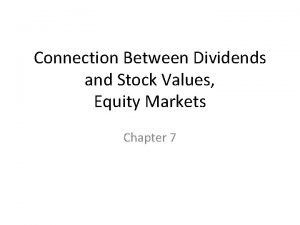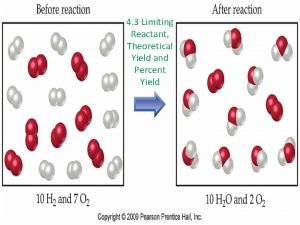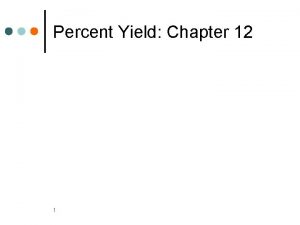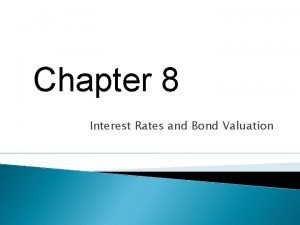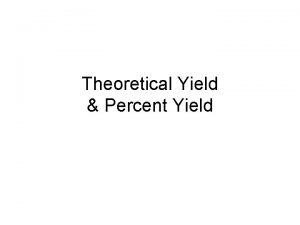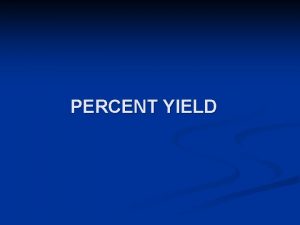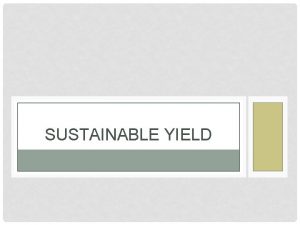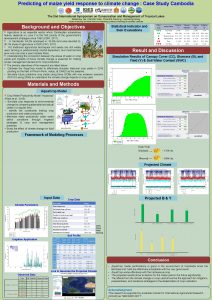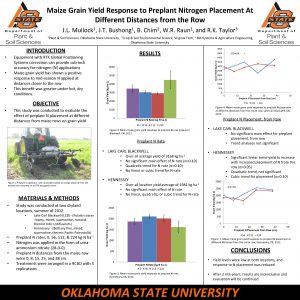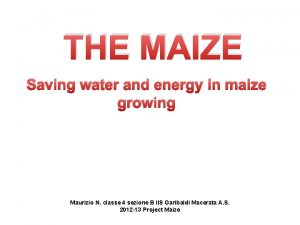Maize Yield Response to Fertilizer under Differing AgroEcological















- Slides: 15

Maize Yield Response to Fertilizer under Differing Agro-Ecological Conditions in Burkina Faso Veronique Theriault, Melinda Smale, and Hamza Haider, MSU Agricultural & Applied Economics Association Annual Meeting, Chicago, Illinois, July 30 -August 1, 2017

Motivation • Achieving food security depends on smallholder productivity • Intensification the only option: • High population density • Aged, degraded soils need mineral fertilizer • Fertilizer policy: “blanket recommendations” • Diverse agro-ecologies → variable economic incentives

Research hypothesis • Response of maize yields to fertilizer and profitability of fertilizer use on maize varies by agro-ecological factors • Contribution to a sparse regional literature

Context 3 agro-ecological zones • Sahelian (< 600 mm) • Sudano-sahelian (600 -900) • Sudanian (900 -1200) 10 soil types • 2/3 of the country is covered by soils that are iron-rich and low in organic matter Maize area ↑ by 700% in 40 years

Data • Continuous farm household survey from the General Research and Sectoral Statistics Department (DGESS), 2009/10 -2011/12 • 2, 321 households (out of 2, 700) and 9, 526 maize plots • National Oceanic and Atmospheric Administration’s Climate Prediction Center • European Union’s Soil Atlas of Africa

Methods Yield response function Profitability • Control function approach with correlated random effects • Quadratic term for N • Interaction of N with agroecological factors • Agro-ecological factors measured at several scales • Marginal product of N • Marginal value-cost ratio (MVCR) • Average value-cost ratio (AVCR) • Low, average, and high farm gate prices • Market, official subsidized, and transacted-subsidized fertilizer prices

Yield Response •

Profitability Parameters • Sensitivity • Average low, mean, and high farmgate price for maize • Fertilizer prices • Market • Official, subsidized (50% of Pf) • Transacted, subsidized • 23% of urea price • 28% of NPK price

Variables Agroecological factors at three scales of analysis: • Plot • size (ha), location (in/outside of compound), and toposequence (lowland, plain, slope) • Presence of soil or water conservation structures, agroforestry, intercropping, and fallow • Village • Total rainfall, coefficient of variation of rainfall (village) • Excellent, good, or poor/marginal soils (village) • Zone • Sudano-sahelian or Sudanian zone • Other productive inputs, plot manager, plot management type and tenure, household characteristics

Estimated maize yield response functions Variables CRE CFA-CRE N 2. 91*** 22. 46*** N*N -0. 014*** -0. 016*** Intercropping -235. 24*** -155. 90*** SWC 70. 28** 78. 85** Excellent soils 16. 26 52. 52* Good soils 178. 75*** 239. 20*** Sudanian zone -198. 46 -65. 62 N*excellent soils -1. 82** -1. 68** N*good soils -3. 12*** -2. 09*** N*sudano-sahelien zone 1. 22*** 1. 44*** Controlling for other productive inputs, plot manager and household characteristics, household time-averages and crop years.

Average partial effect of N and optimum Average partial effect of Nhat Average 22 Average Unconditional partial effect N of N(kg/ha) 95% CI Conditional N (kg/ha) Agronomic optimum N 13 -31 38 722 16 Net loss of ~700 kg/ha of N over a 30 year period (World Bank, 1996) Nutrient depletion can even reach 100 kg NPK/ha/year (Henao 1992) Our results suggest a continuous soil fertility depletion in maize farming

Value-cost ratios Price Scenario Fertilizer at Subsidized fertilizer Subsidized + TC price market price MVCR AVCR Low 1. 6 3. 2 2. 1 2. 2 Average 1. 7 1. 8 3. 5 2. 3 2. 4 High 1. 9 2. 0 3. 9 2. 6 Profit maximization at MVCR=1 Incentive if AVCR >2 (Morris et al. 2007); AVCR >3 -4 (Kelly 2006)

Conclusions • Maize yield response to N is ~ 22 kg/ha • Agro-ecological factors, at the scale of plot, village soil type and climatic zone, do affect maize yield response to fertilizer and productivity • Optimal N rates > maximum N application rates • Not always profitable to use fertilizer

Policy implications • Caution when generalizing across agroecologies • Does a crop targeted fertilizer subsidy program make sense? • Importance of reducing transaction costs • Location-specificity vs. scale

Descriptives • • • 40% of maize plots fertilized (all years) Unconditional mean of N kg/ha=16 Conditional mean of N kg/ha=38 Mean yield w/out fert=970 kg/ha Mean yield w/fert=1314 kg/ha Recommended rate = 45. 5 -53 N/ha zones soils
 What is theoretical yeild
What is theoretical yeild Universidad central de las villas
Universidad central de las villas Evergreen fertilizer company produces fertilizer
Evergreen fertilizer company produces fertilizer Communication selectivity barriers examples
Communication selectivity barriers examples Rolled throughput yield vs first pass yield
Rolled throughput yield vs first pass yield Pure discount bond
Pure discount bond Current yield vs yield to maturity
Current yield vs yield to maturity Dividend yield and capital gains yield
Dividend yield and capital gains yield Theoretical yield vs actual yield
Theoretical yield vs actual yield Dividend yield and capital gains yield
Dividend yield and capital gains yield How to find percent yield
How to find percent yield Current dividend
Current dividend Actual yield
Actual yield Theoretical yeild
Theoretical yeild Bond valuation theorems
Bond valuation theorems Maizegdb
Maizegdb

